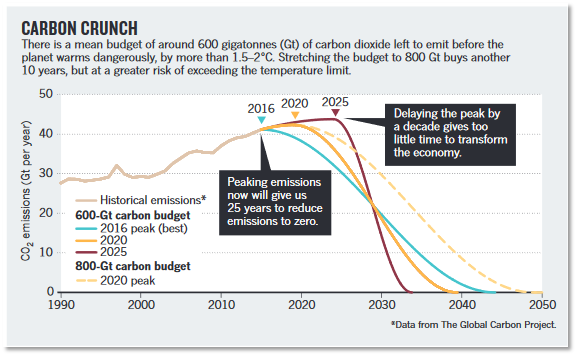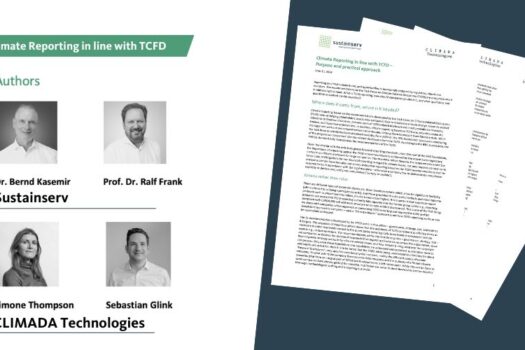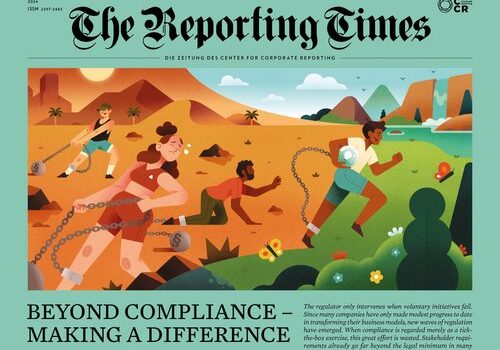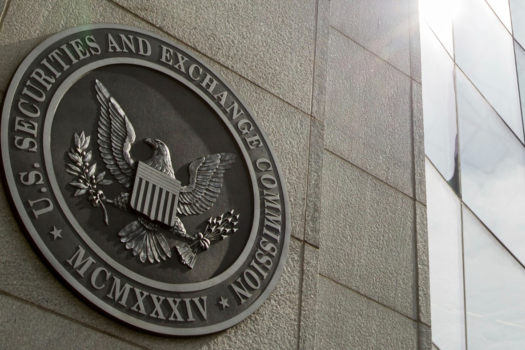Science-based targets (SBTs) are corporate climate goals aligned with the latest scientific consensus and the Paris Agreement on climate change. In place of arbitrary goals such as “25% less emissions by 2025,” SBTs provide a meaningful and comprehensible rationale: What will it take to achieve the Paris target, and what is the “fair” contribution my company can make to it? To gain official recognition from the Science Based Targets initiative (SBTi), companies must propose emission reduction targets based on comprehensive greenhouse gas inventories and incorporate global and sector-related contexts and trends.
The evolution of science-based targets
The SBTi is a nonprofit partnership launched in 2015 by CDP, the United Nations Global Compact, World Resources Institute and the World Wide Fund for Nature (WWF). Setting an SBT is a key commitment of the We Mean Business Coalition, a group of organizations that actively encourages emission reduction goal-setting among businesses. The SBTi drives climate action in the private sector by supporting companies in setting and disclosing emissions reductions and net-zero targets in line with climate science and the goals of the Paris Agreement.
At present, more than 1’200 leading companies around the world have committed to reduce their emissions in line with the SBTi, including many of the world’s biggest brands, such as BMW, Nestlé, Coca-Cola and Microsoft. Following the lead of the larger companies, medium-sized companies are increasingly recognizing the advantages of credible and comprehensive climate protection planning, such as Sustainserv clients Riverside Natural Foods and a pan-European utility company (see below). This represents a growth of nearly 65% in a little over one year, a clear indicator of the importance of this movement. The SBTi Progress Report 2020 reports that in the one year from November 2019 to October 2020, 370 organizations joined the SBTi at an average rate of 31 companies per month, which is more than double the average rate from the four years between 2015 to 2019.
“We are approaching a critical mass of companies setting science-based targets in key sectors and geographies.”
SBTi Progress Report 2020
“According to the ‘diffusion of innovations’ theory, adoption of an innovation by 10-25% of a system’s members (i.e. the ‘critical mass’) is followed by rapid adoption by the remaining members. The SBTi takes the threshold of 20% as a critical mass, or potential ‘tipping point,’ for setting science-based targets within a given sector or geography.”
Not only are an increasing number of companies setting SBTs for the first time, carbon emission targets themselves are also becoming more specific and anchored in science. More companies are now doing the honest analysis necessary to own up to their emissions and commit to reining them in. As a result, we are seeing much higher targets than in previous years, as high as 50% emissions reductions and beyond. This promising trend suggests that with appropriate technological innovation, net-zero targets will be within reach for a critical mass of companies in the next 15 years.
“Through the 2015 Paris Agreement, world governments committed to limiting global temperature rise to well-below 2°C above pre-industrial levels and pursuing efforts to limit warming to 1.5°C. In 2018, the Intergovernmental Panel on Climate Change warned that global warming must not exceed 1.5°C above pre-industrial temperatures to avoid the catastrophic impacts of climate change. To achieve this, greenhouse gas (GHG) emissions must halve by 2030 – and drop to net zero by 2050.” – ScienceBasedTargets.org
The clock is ticking
As illustrated in the image below published by Nature in June 2017, there is a “budget” of CO2 that can be emitted before the planet warms by more than 1.5-2OC. The sooner reductions begin, the flatter the reduction pathway. SBTi offers methodologies and tools that assign companies reduction pathways, reflecting their fair share of remaining emissions that need eliminating, depending on the sector(s) they operate in.

Science-based target setting for Sustainserv clients
Sustainserv’s services include helping companies prepare a SBT submission. To gain official recognition from the Science Based Targets initiative, companies must propose targets based on comprehensive greenhouse gas inventories and incorporate global and sector-related contexts and trends. While this may sound overwhelming, we have the experience and knowledge to help calculate and implement science-based targets and prepare submissions. Establishing science-based targets will position a company as a leader in the field of climate change mitigation. Following approval of the SBTi, we assist companies in developing strategies and initiatives to ensure they meet their target on time.
Riverside Natural Foods
We recently completed this process for Riverside Natural Foods, which set an SBT to reduce emissions 30% by 2030 from a 2020 base year, despite current average revenue (and manufacturing) growth of more than 25% annually. For a company growing as quickly as Riverside, developing its SBT presented a particular challenge in that a projected doubling of revenue every three years correlates to a similar increase in emissions unless the company enacts drastic and ambitious emission reduction plans.
Pan-European Energy Utility Company
Sustainserv has guided the development of the climate strategy for a pan-European energy company. We assisted in defining ambitions, setting targets and identifying measures to achieve their goals. We have guided them throughout the process up to submission of their SBT to SBTi.
Why companies should set an SBT
The benefits of setting an SBT are many, starting with the nature of an SBT as a transparent, verifiable and credible climate goal. Science-based targets are a global standard that follow scientific consensus to limit global warming. The Paris Agreement commits participating countries to achieving net-zero emissions by 2050, and companies in these countries – such as Switzerland, Germany and since January 2021, the United States – will be faced with legislation aimed achieving the Paris Agreement commitment. SBTs preemptively ensure the company can define its reduction path and transform its business model to be compatible with a net-zero economy.
With consumer and investor demand for good ESG performance continuing to increase exponentially, setting an SBT helps a company compete. From stakeholder approval to risk management and innovation (both cost-cutting and revenue-generating), the presence of an SBT can directly sharpen the competitive edge.
Establishing an SBT that reflects a company’s commitment to doing their share to keep global warming below 2OC positions a company as a leader in the field of climate change mitigation. Additionally, the process of developing the target requires full understanding of a company’s own GHG emissions, which can crystallize internal motivation, turning concepts into action.
Creating and submitting an official SBT will make it far more likely that a company will reach the target, with multiple strategic advantages along the way. In short, the public commitment aspect of submitting to and receiving approval from the SBTi serves to focus attention and accountability on the target.
Get in touch. We are happy to tell you more about it.







